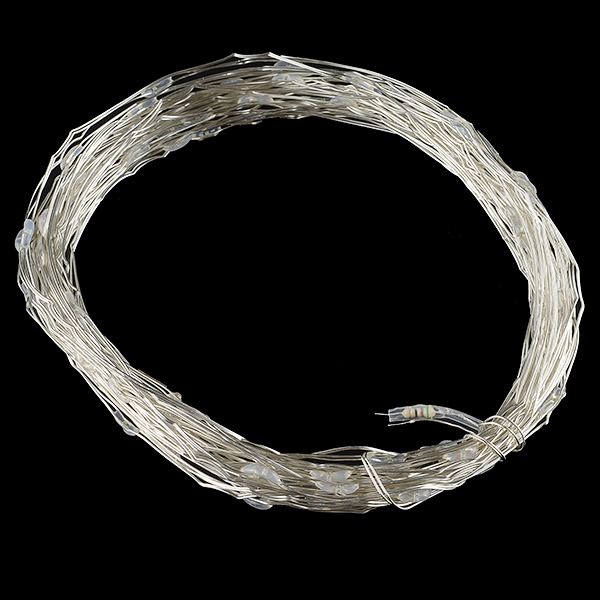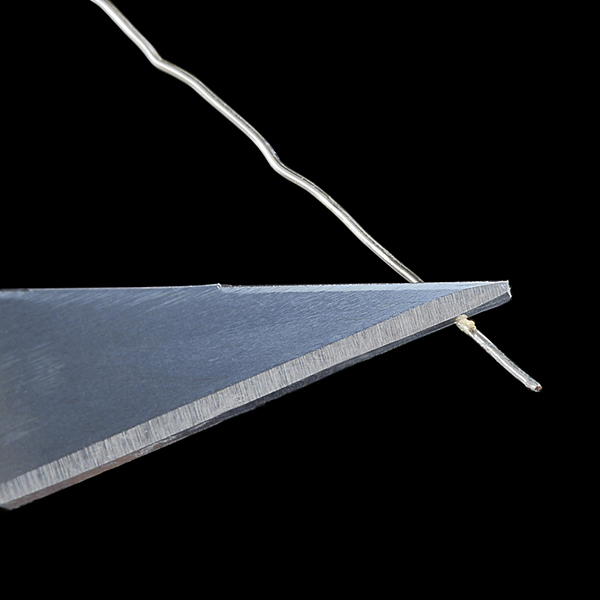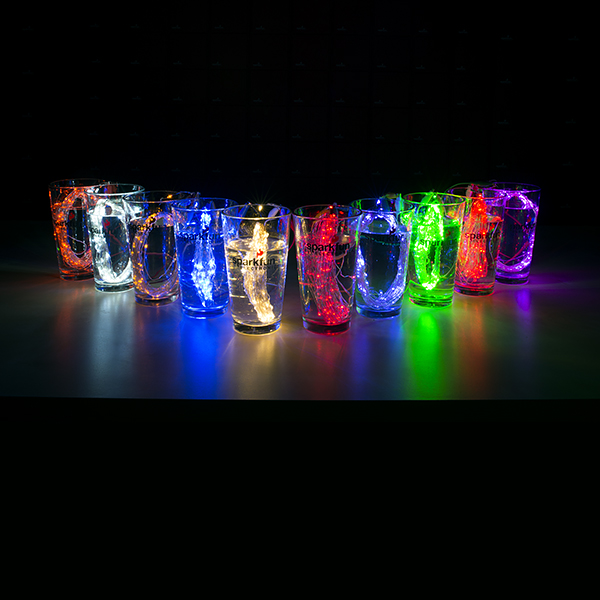LED String Lights - Warm White (10M)
These LED string lights are a great way to add light to any project with little to no soldering required. The insulated strings come in 10m lengths with one warm white LED every 10cm for a total of 100 LED's, all you have to do is add 3-3.4V and they are ready to shine.
Note: 3-3.4V is the the working voltage of these strings. Please do not use 12V.
- 10m
LED String Lights - Warm White (10M) Product Help and Resources
Core Skill: Electrical Prototyping
If it requires power, you need to know how much, what all the pins do, and how to hook it up. You may need to reference datasheets, schematics, and know the ins and outs of electronics.
Skill Level: Rookie - You may be required to know a bit more about the component, such as orientation, or how to hook it up, in addition to power requirements. You will need to understand polarized components.
See all skill levels
Comments
Looking for answers to technical questions?
We welcome your comments and suggestions below. However, if you are looking for solutions to technical questions please see our Technical Assistance page.
Customer Reviews
No reviews yet.






These are really nice little strings, and brought them in to distribute in Canada at Solarbotics. Part of what we do is play with most of the things we bring in, so while we played with these, we tested them at several voltages (3, 4.5, 6, 7.6V), measuring the current consumption and the lux output of the last LED in the string.
Feel free to check out the results pdf.
I removed the 39 ohm resistor that came with my soft white string and replaced it with two 100 ohm 1 Watt resistors in parallel (50 Ohms). I powered the string with a 9V DC adapter (just like TOL-00298) using a DC barrel jack adapter (PRT-10288). Everything stays within tolerances (nothing gets to hot or overloaded) and it made a very nice light for my wife's art deco display cabinet. Its been in use for two weeks without problems as of the time of this message being posted. Very Nice!
What would I need to do to cut this in half and have two 5m strings? Just add a resistor to the back half?
Yup :)
Ha! Thanks. Do you, offhand, know what the resistor is on the front half? I could just look at it upon arrival, but it's easier to know ahead of time. Didn't see anything in the datasheet.
One of the comments below suggested that for this string it's a 39 Ohm resistor. The one in the picture is probably from a different string.
Unfortunately it doesn't look like there's an authoritative comment from somebody with these strings to give a known-good answer, but as far as I could ever tell, all the LEDs are simply wired in parallel (as opposed to the datasheet's confusing schematic that shows groupings of 25 in parallel, and the groups in series) - so the resistor for 1 LED would be the same as for all 100.. other than power rating :) Ultimately you may have to experiment with it when you receive it with regard to desired brightness. A box of the entire E12 series is usually good to have around :) SparkFun also sells an assortment box of resistors, not quite E12 but it'll do)
Oop, missed that part of the comment somehow. Don't think I have a 39 in my stash... I'll have to investigate. And yeah, actual specs on this are confusing at best.
Thanks! <3
The exact Ohmage isn't too important - anything over 39 will work, too, they'll just light up more dimly when using the suggested driving voltage :)
very basic question from a complete beginner: Just opened up the string- how do I know which wire is positive and which is negative as they are both silver and appear identical. Thanks
Not a silly question at all! There's probably a better way to do it, but truthfully, I always just press the ends to a coin cell battery to see which alignment lights it up, then mark the negative with a sharpie for reference. It's a little hacky, but effective and quick. :)
So you can not make these lights blink slow or fast?
Old comment is old, but: Not individually. You can drive the entire string (or as somebody asked today, cut it into multiple segments - just add resistors as appropriate) and then that string (segment) can certainly be made to blink slow/fast, as long as you can make your driver do that. But they don't blink/fade on their own like you might see in some christmas light strings.
So you can not make these lights blink slow or fast?
These appear to be just what I was looking for to decorate my front arbor- do you have any idea how they would survive outdoors? Seattle has a fairly mild climate...
The string itself is waterproof, so as long as you enclose your power supply well, I don't think you'll have a problem.
Noob question: How much power will these draw when lit?
The datasheet states a 0.05W scattered distribution (which I assume is some kind of probability curve). I also assume that rating is per LED, so for a full string with 100 LED I'm looking at 5W, plus whatever is going through the resistor of course. Am I off track here?
I decided to buy these and find out for myself.
Out of the bag, I connected them to by power supply and hit them with 3V...and nothing. I re-stripped the wires to ensure I had connection through the epoxy, and powered them up again. Nothing. I slowly ratcheted up the voltage from 3, past 3.4V to 3.7V when they finally, and dimly lit up. They didn't really begin to illuminate in any bright fashion until I got to 6V, and seemed to level off in brightness around 9V. I didn't go beyond 9V.
I noted the current draw from the power supply at 6V was about 70 mA, putting the power at about 0.42 W. I've assumed then the 0.016 mA draw is per echelon of LEDs (4 echelons of 25 LEDs each, according to the data sheet) => 4 x 0.016 A = 64 mA.
I wonder if I hit these with a constant current source I could get them to be brighter at a lower volatage? I have some LM317's that are in need of a project, so I guess I know what I'm doing tonight!
Why does the video state 12V working voltage and your product 'Note' state 3-3.4V?
Because the video has it wrong. Whether it was the 'water cooling' in the video or sheer luck or there was never actually 12V on the string, applying 12V to these will typically result in a very hot, if not quickly burnt out, resistor.
How flexible/bendable is the string and what material is it made of?
It's not string, it's a thin metal wire. It coils up pretty nicely and is rather flexible in my opinion.